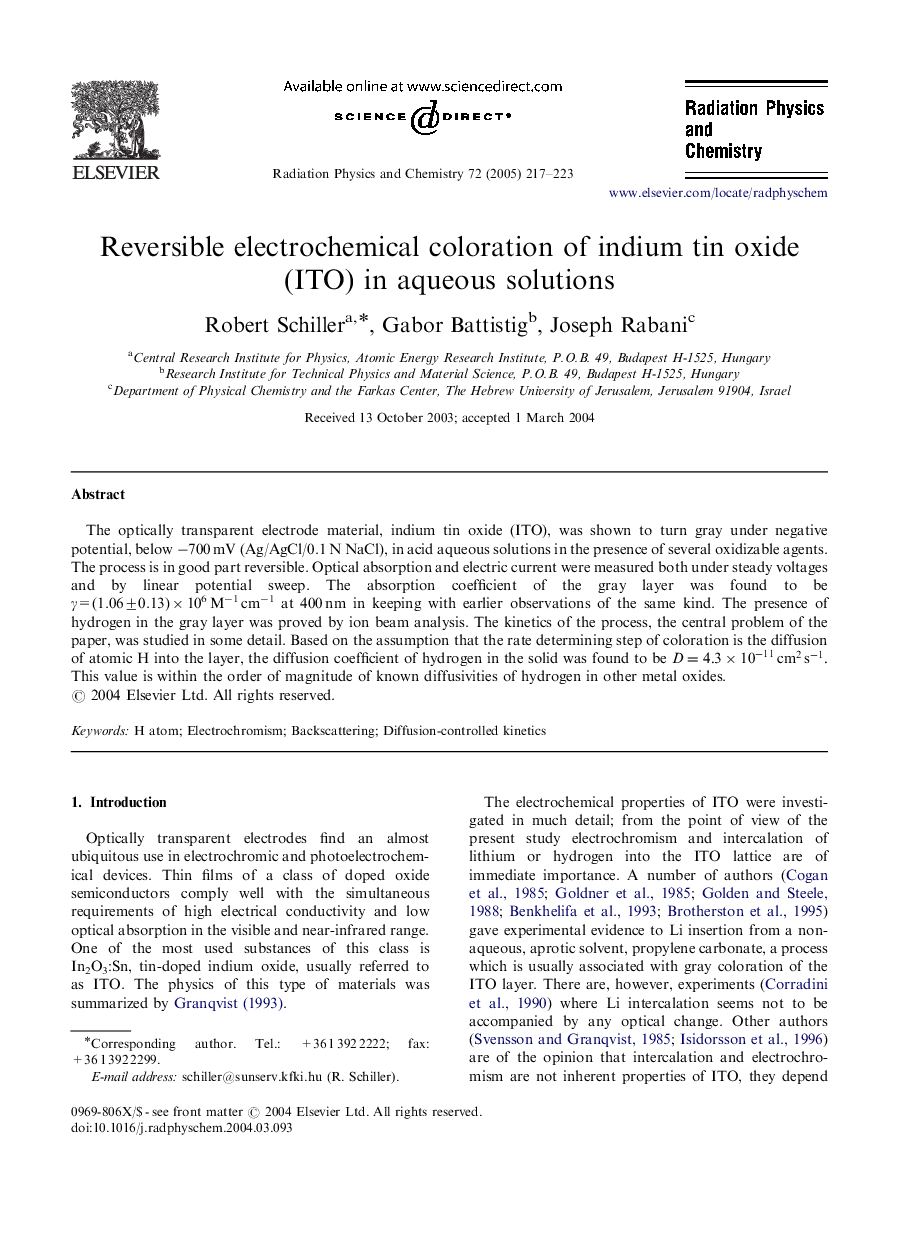| Article ID | Journal | Published Year | Pages | File Type |
|---|---|---|---|---|
| 9876364 | Radiation Physics and Chemistry | 2005 | 7 Pages |
Abstract
The optically transparent electrode material, indium tin oxide (ITO), was shown to turn gray under negative potential, below â700 mV (Ag/AgCl/0.1 N NaCl), in acid aqueous solutions in the presence of several oxidizable agents. The process is in good part reversible. Optical absorption and electric current were measured both under steady voltages and by linear potential sweep. The absorption coefficient of the gray layer was found to be γ=(1.06±0.13)Ã106 Mâ1 cmâ1 at 400 nm in keeping with earlier observations of the same kind. The presence of hydrogen in the gray layer was proved by ion beam analysis. The kinetics of the process, the central problem of the paper, was studied in some detail. Based on the assumption that the rate determining step of coloration is the diffusion of atomic H into the layer, the diffusion coefficient of hydrogen in the solid was found to be D=4.3Ã10-11cm2s-1. This value is within the order of magnitude of known diffusivities of hydrogen in other metal oxides.
Keywords
Related Topics
Physical Sciences and Engineering
Physics and Astronomy
Radiation
Authors
Robert Schiller, Gabor Battistig, Joseph Rabani,
